Discovering Wutun Temple: A Hidden Gem in the Heart of China
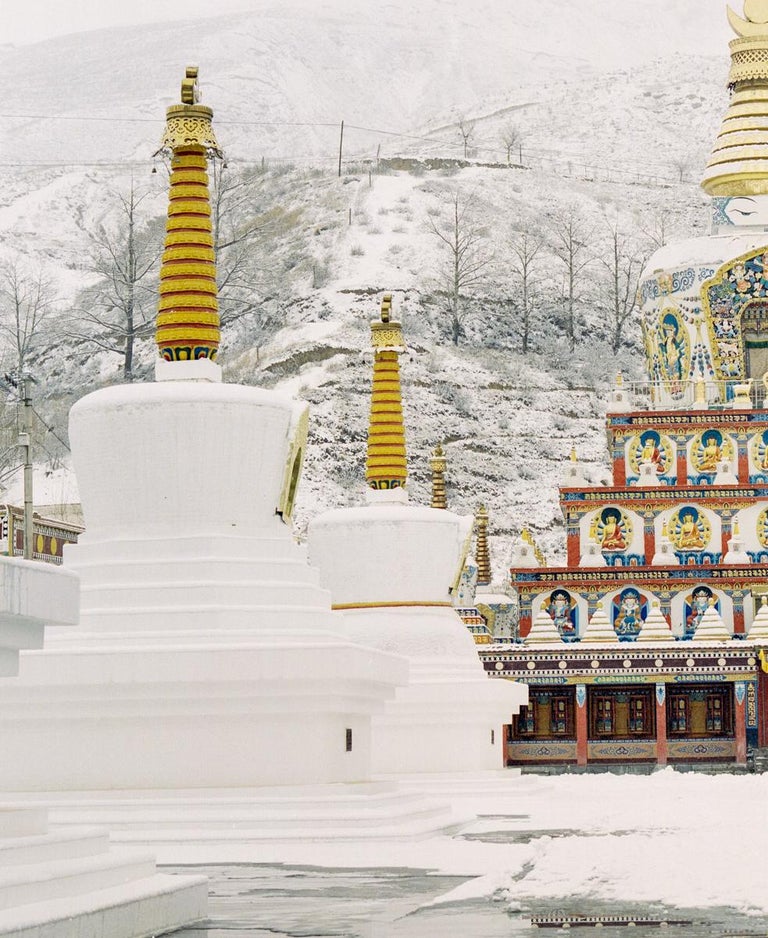
An Essential Guide to Visiting Wutun_Temple
Nestled amidst the breathtaking landscapes of Qinghai Province in China, Wutun Temple (吾屯寺) beckons travelers with its rich tapestry of Tibetan culture and stunning architectural beauty. This hidden gem, often overshadowed by more famous landmarks, offers a serene escape into a world where spirituality and artistry intertwine. As you approach the temple, the vivid hues of its frescoes and the harmonious chants of monks create an atmosphere that transports you to another time.
Wutun Temple is not just a place of worship; it is a testament to the resilience and vibrancy of Tibetan Buddhism. Established in the 18th century, this temple is renowned for its stunning murals, intricate sculptures, and the unique blend of Han and Tibetan architectural styles. Visitors will find themselves captivated by the exquisite details that adorn the walls and ceilings, each telling a story steeped in tradition and devotion.
Whether you’re a seasoned traveler seeking spiritual enlightenment, an art enthusiast eager to explore unique cultural expressions, or simply someone in search of tranquility, Wutun Temple promises an unforgettable experience. Prepare to immerse yourself in the serene ambiance, engage with the local community, and discover the profound beauty of this remarkable destination. Your journey to Wutun Temple will undoubtedly enrich your understanding of Tibetan culture and leave you with lasting memories.
In This Guide
- An Essential Guide to Visiting Wutun_Temple
- The Rich History and Legends of Wutun_Temple
- Main Highlights: What You Absolutely Can’t Miss
- Planning Your Visit: A Practical Guide
- Tickets: Prices, Booking, and Tips
- How to Get There: A Complete Transportation Guide
- Local Cuisine and Accommodation Nearby
- Frequently Asked Questions
- Final Thoughts on Your Trip
The Rich History and Legends of Wutun_Temple
Nestled in the enchanting landscape of China’s Qinghai Province, Wutun Temple (吾屯寺) stands as a testament to the region’s rich cultural tapestry and spiritual heritage. This Tibetan Buddhist temple, established in the early 18th century, emerged as a significant center for religious learning and practice, deeply intertwined with the history of the Tibetan people.
The temple was founded by a prominent lama, and its construction was driven by a desire to promote Tibetan Buddhism among the local population. Wutun Temple soon became renowned for its unique architectural style, which harmoniously blends Tibetan and Han Chinese influences, reflecting the diverse cultural milieu of the region. The intricate murals and thangkas that adorn the temple’s walls depict various Buddhist deities and scenes from Tibetan mythology, each telling stories of devotion and enlightenment.
One of the most fascinating aspects of Wutun Temple is its connection to the legendary figure of Tsongkhapa, the founder of the Gelug school of Tibetan Buddhism. According to local lore, the temple was built on the site where Tsongkhapa once meditated, further solidifying its status as a pilgrimage destination for devotees. Visitors to Wutun Temple are often captivated by the stories of miraculous events that are said to have occurred here, including instances of healing and divine intervention.
As you wander through the temple’s serene courtyards and prayer halls, you’ll encounter devoted monks engaged in daily rituals, their chants echoing against the walls that have witnessed centuries of spiritual practice. The temple not only serves as a place of worship but also as a vital center for education, where young monks receive training in Buddhist philosophy, language, and arts.
Throughout the years, Wutun Temple has endured the challenges of political upheaval and social change, surviving attempts to suppress Tibetan culture. Despite these trials, the temple has remained a beacon of hope and resilience, drawing visitors from around the globe who seek to understand the intricate layers of Tibetan spirituality and history.
To this day, Wutun Temple is not merely a historical site but a living monument to the enduring spirit of Tibetan Buddhism. It invites travelers to explore its sacred grounds, engage with its legends, and reflect on the profound teachings that continue to inspire countless souls. Whether you are a spiritual seeker, a history enthusiast, or simply a curious traveler, Wutun Temple offers a unique glimpse into the rich tapestry of Tibetan culture and the timeless quest for enlightenment.
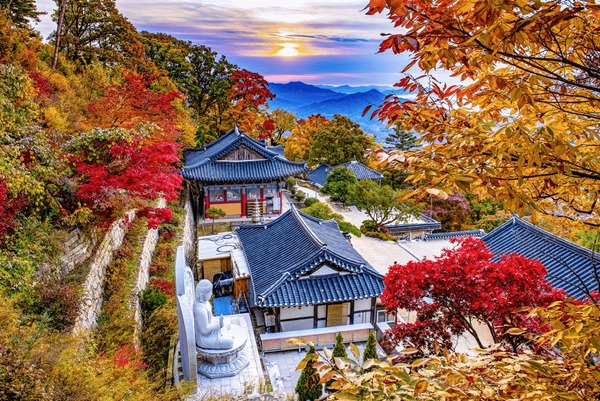
Wutun_Temple.
Main Highlights: What You Absolutely Can’t Miss
When visiting Wutun Temple (吾屯寺), a stunning gem located in the picturesque Qinghai Province of China, there are several highlights you absolutely cannot miss that will enrich your experience and deepen your appreciation of this unique cultural site.
Majestic Architecture
Wutun Temple is renowned for its intricate architectural design, which beautifully reflects Tibetan Buddhist influences. The temple features towering stupas and ornate prayer halls adorned with vivid murals and sculptures. Be sure to take your time exploring the various buildings, each showcasing unique artistry and craftsmanship that tells stories of the region’s spiritual heritage.
The Rolling Hills of the Tibetan Plateau
Set against the breathtaking backdrop of the Tibetan Plateau, the temple provides stunning panoramic views of the surrounding landscape. Take a moment to step outside and soak in the natural beauty that envelops the site. The rolling hills and vibrant green pastures create a tranquil environment, perfect for reflection and meditation.
Rich Cultural Experience
Wutun Temple is not just a place for worship; it is a vibrant center of culture and community. Engage with the local monks, who are often eager to share their knowledge about Buddhist practices and the temple’s history. If you visit during a religious festival, you’ll witness colorful ceremonies and traditional dances that bring the temple to life with joy and spirituality.
The Unique Thangka Paintings
One of the temple’s standout features is its impressive collection of thangka paintings. These intricate scroll paintings depict various deities and scenes from Buddhist lore, each crafted with remarkable detail. Take the time to appreciate the skill involved in their creation – many of these artworks are the result of years of dedication and practice.
The Serene Prayer Flags
As you wander through the temple grounds, you will encounter vibrant prayer flags fluttering in the breeze. These flags are not only visually striking but also hold significant spiritual meaning. They are believed to spread blessings and good fortune to all beings. Make sure to pause and take a moment to absorb the peaceful ambiance they create.
The Unique Three-Religions Hall
Don’t miss the Three-Religions Hall, which showcases the harmonious coexistence of Tibetan Buddhism, Taoism, and Confucianism. This unique aspect of Wutun Temple reflects the diverse religious practices in the region and provides insight into the cultural syncretism that characterizes the local community.
Scenic Walks and Meditation Spots
The temple grounds are dotted with serene spots perfect for quiet contemplation. Find a peaceful corner to sit and meditate, or simply enjoy the soothing sounds of nature. The tranquility of the area enhances the spiritual experience and offers a moment of respite from the busyness of travel.
Local Cuisine
Finally, after exploring the temple, treat yourself to local Tibetan cuisine at nearby eateries. Dishes such as yak meat, barley, and butter tea are essential experiences that will offer a taste of the region’s rich culinary traditions.
Conclusion
Visiting Wutun Temple is not just a journey through a historical site; it’s an opportunity to immerse yourself in the rich tapestry of Tibetan culture and spirituality. From its breathtaking architecture to its serene surroundings, every moment spent here is a chance to connect with the local heritage and find tranquility in the heart of the Tibetan Plateau. Make sure to carve out enough time to truly absorb all that this magnificent temple has to offer!
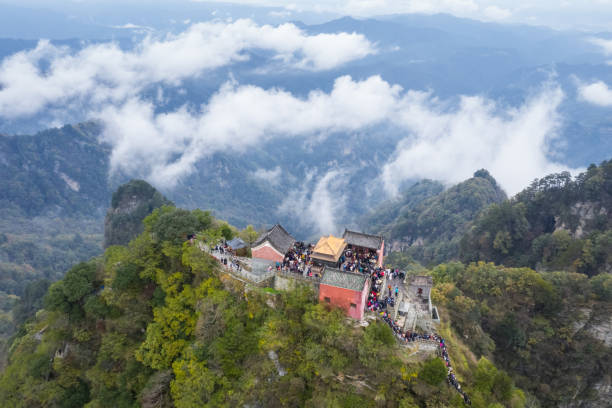
Wutun_Temple.
Planning Your Visit: A Practical Guide
Planning Your Visit: A Practical Guide to Wutun Temple (吾屯寺)
Nestled in the serene landscape of China’s Qinghai Province, Wutun Temple, a captivating site of cultural and spiritual significance, is an essential stop for travelers seeking to immerse themselves in Tibetan Buddhism. This guide provides practical tips to help you make the most of your visit to this stunning temple complex.
Getting There
Location: Wutun Temple is located in the Huangnan Tibetan Autonomous Prefecture, approximately 25 kilometers from the city of Xining, the provincial capital.
Transportation Options:
– By Bus: Regular buses run from Xining to Wutun Temple. The journey takes about 45 minutes and offers a budget-friendly option for travelers.
– By Taxi or Rideshare: For a more convenient and quicker trip, consider taking a taxi or using rideshare apps, which are available in Xining.
– Self-Driving: If you prefer flexibility, renting a car is an option. The roads are well-maintained, and the scenic drive is an added bonus.
Best Time to Visit
Wutun Temple is open year-round, but the best time to visit is during spring (April to June) and autumn (September to October) when the weather is mild, and the surrounding scenery is at its most beautiful. Avoid the harsh winter months if you prefer more comfortable conditions for exploring.
Entry Fees and Opening Hours
- Entry Fee: There is a small entrance fee, typically around 20 RMB (approximately $3 USD), which contributes to the maintenance of the temple.
- Opening Hours: The temple is open daily from 8:00 AM to 6:00 PM. Arriving early in the morning can provide a quieter experience and allow you to witness the monks’ morning prayers.
What to See
Wutun Temple is renowned for its unique blend of Han Chinese and Tibetan architectural styles, intricate murals, and vibrant prayer flags. Key highlights include:
- Main Hall (Dazang): Admire the stunning Buddha statues and the rich decorations that tell stories of Tibetan Buddhism.
- Murals: Spend time exploring the detailed murals that depict various Buddhist teachings and tales, showcasing the artistic traditions of the region.
- Monastery Grounds: Wander through the peaceful grounds, where you may encounter monks engaged in prayer and meditation.
Cultural Insights
As a site of active worship, it’s essential to observe local customs and etiquette. Here are a few tips to keep in mind:
- Dress Modestly: Visitors should dress respectfully; long pants and sleeves are advisable.
- Photography: Always ask for permission before taking photographs of monks or locals, and be mindful of your surroundings.
- Participate Respectfully: If you wish to join in on any ceremonies or prayers, do so quietly and respectfully.
Nearby Attractions
After visiting Wutun Temple, consider exploring other nearby attractions to enrich your experience:
- Kumbum Monastery: Just a short drive away, this important Tibetan Buddhist monastery is famous for its stunning architecture and rich history.
- Xining City: Spend some time in Xining, where you can explore local markets, sample Tibetan cuisine, and visit other cultural sites.
Tips for Travelers
- Language: While Mandarin is widely spoken, knowing a few phrases in Tibetan can enhance your experience and foster connections with the locals.
- Cash: Keep cash on hand, as many small vendors and local eateries may not accept credit cards.
- Altitude: The altitude in this region can cause altitude sickness for some travelers. Stay hydrated and take it easy, especially if you’re coming from lower elevations.
By following this practical guide, you’ll be prepared to delve into the spiritual and cultural richness of Wutun Temple, making your visit a memorable part of your journey through China. Enjoy the tranquility and beauty of this unique destination!
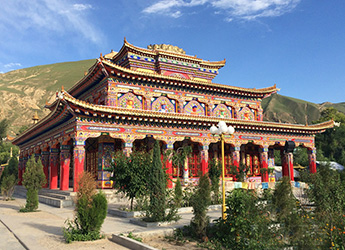
Wutun_Temple.
Tickets: Prices, Booking, and Tips
Visiting Wutun Temple (吾屯寺) is a journey into a world of vibrant culture, stunning architecture, and spiritual tranquility. To make the most of your visit, it’s essential to know about ticket prices, booking options, and handy tips.
Ticket Prices
As of now, the entrance fee for Wutun Temple is approximately CNY 50 per person. This fee gives you access to the temple grounds, where you can explore the intricate carvings, beautiful murals, and serene landscapes that surround this iconic site. If you’re part of a larger group or visiting as a family, check if any discounts are available, as sometimes group rates can lower the cost.
Booking Tickets
Tickets can be purchased on-site at the temple entrance, which is convenient for spontaneous visits. However, during peak tourist seasons or major holidays, it’s advisable to arrive early to avoid long queues. For those who prefer to plan ahead, some travel agencies or online platforms might offer advance booking options, allowing you to secure your entry and potentially skip the line.
Tips for Your Visit
-
Timing is Everything: Consider visiting during the early morning or late afternoon. These times not only provide cooler temperatures but also offer stunning light for photography and a more peaceful atmosphere to explore.
-
Dress Code: As Wutun Temple is a place of worship, it’s respectful to dress modestly. Aim for clothing that covers your shoulders and knees.
-
Guided Tours: To enhance your experience, consider hiring a local guide. They can provide invaluable insights into the temple’s history, architecture, and cultural significance that you might miss on your own.
-
Photography: The temple’s stunning architecture and surroundings make it a photographer’s dream. However, be mindful of signs indicating where photography is allowed, especially in areas that may be more sacred.
-
Plan for the Weather: Depending on the season, make sure to check the weather forecast. Bringing an umbrella for unexpected rain or sunscreen for sunny days can make your visit more enjoyable.
By following these tips and being aware of ticketing details, you’ll be well-prepared for a fulfilling visit to Wutun Temple, a highlight of your travels in this culturally rich region. Enjoy your journey into history and spirituality!
How to Get There: A Complete Transportation Guide
Reaching Wutun Temple (吾屯寺) offers travelers a chance to experience not just its spiritual and architectural beauty but also the scenic routes traversed to get there. This guide lays out the various transportation options available for international travelers eager to visit this iconic destination.
Getting to Wutun Temple
1. By Air
The nearest major airport to Wutun Temple is Xining Caojiabao Airport (XNN), which is approximately 120 kilometers away. This airport serves both domestic and limited international flights, making it a convenient entry point for foreign travelers.
- From the Airport to Wutun Temple:
- Taxi: Taxis are readily available at the airport. Expect a fare of about 300-400 RMB and a travel time of about 2-3 hours, depending on traffic.
- Private Transfer: Many hotels and travel agencies in Xining offer private transfer services. This is a comfortable option, especially for groups or those with luggage.
- Bus: Look for buses heading to Huangnan Tibetan Autonomous Prefecture. They may take you closer to the temple area, but you may need to arrange a local taxi from the bus stop.
2. By Train
Xining Railway Station serves as a hub for trains traveling across China.
- Train to Xining:
- Major cities like Beijing, Shanghai, and Chengdu have direct train services to Xining. The journey offers stunning views of the Qinghai-Tibet Plateau.
- From Xining to Wutun Temple:
- Bus: Once you arrive at Xining, you can catch a bus from the Xining Long-distance Bus Station to the Tongren County area, which is the closest town to Wutun Temple. The bus ride takes around 2-3 hours.
- Taxi: Alternatively, hire a taxi from the train station directly to Wutun Temple, which can be a more efficient but pricier option.
3. By Bus
For those already in the region, buses are a practical and economical way to reach Wutun Temple.
- From Xining:
-
Head to the Xining Long-distance Bus Station and look for buses heading to Tongren, a town near Wutun Temple. Buses run frequently throughout the day and the fare is budget-friendly, typically around 50-70 RMB.
-
From Tongren:
- Once in Tongren, local mini-buses or taxis can take you directly to Wutun Temple. This ride is relatively short, roughly 30 minutes.
4. By Car
For the more adventurous travelers, renting a car provides the ultimate flexibility to explore the region at your own pace.
- Car Rentals: Available in Xining, but ensure you have an International Driving Permit (IDP) and are familiar with local driving regulations.
- Route: The drive from Xining to Wutun Temple is scenic, passing through beautiful landscapes that are characteristic of the Tibetan Plateau. The journey takes about 2-3 hours.
Tips for Travelers
- Language: English is not widely spoken in the region, so having a translation app or a phrasebook can be helpful for communication.
- Cash: While larger establishments may accept cards, having cash on hand (RMB) is advisable, especially for local transport and small purchases.
- Altitude Consideration: Wutun Temple is situated at a high elevation. Travelers should acclimatize properly to avoid altitude sickness.
Conclusion
Whether you choose to fly, take a train, or travel by bus, getting to Wutun Temple is an adventure in itself, offering glimpses into the culture and landscapes of Qinghai province. Prepare for a journey that is as rewarding as the destination!
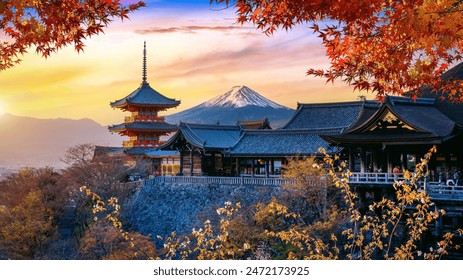
Wutun_Temple.
Local Cuisine and Accommodation Nearby
When visiting Wutun Temple (吾屯寺), immersing yourself in the local culture through its cuisine and comfortable accommodations is a must. Located in the picturesque surroundings of China’s Qinghai Province, this area offers a delightful blend of traditional flavors and welcoming lodgings.
Local Cuisine
-
Tibetan Noodles (Thukpa)
A must-try dish while in the region, Tibetan noodles are served in a hearty broth, often accompanied by tender meat and fresh vegetables. The unique flavors and spices will give you a taste of local culinary traditions. -
Momo Dumplings
These beloved Tibetan dumplings, filled with either meat or vegetables, are a popular snack or meal. They are typically steamed or fried and served with a tangy dipping sauce, making them a perfect accompaniment to your temple visit. -
Yak Butter Tea
Experience the local beverage that is a staple in Tibetan culture. Made from yak butter, tea leaves, and salt, it’s rich and creamy—ideal for warming you up after a day of exploration. -
Tsampa
A traditional Tibetan staple made from roasted barley flour, tsampa is often served with butter tea or mixed with water to form a doughy consistency. It’s a filling and energizing option for travelers. -
Local Market Stalls
Don’t miss the chance to explore nearby market stalls where you can sample freshly made snacks, including fried pastries and roasted nuts. These small bites offer a glimpse into the daily life and flavors of the local community.
Accommodation Nearby
-
Wutun Temple Guesthouse
Just a stone’s throw away from the temple, this charming guesthouse offers cozy accommodations with stunning views of the surrounding mountains. The hospitable staff often provide homemade meals, allowing you to enjoy local cuisine right at your doorstep. -
Tibetan Cultural Hotel
Immerse yourself in the local culture at this hotel, which features traditional Tibetan decor. Conveniently located near the temple, it offers comfortable rooms and a restaurant that serves authentic Tibetan dishes. -
Qinghai Lake Resort
A bit further out but worth the drive, this resort provides a luxurious stay with breathtaking views of Qinghai Lake. Enjoy spacious rooms, an on-site restaurant with a diverse menu, and easy access to local attractions, including Wutun Temple. -
Hostel Options
For budget travelers, several hostels in the nearby town offer dormitory-style accommodations. These hostels provide a social environment, perfect for meeting fellow travelers while keeping costs low. -
Homestays
Opt for a homestay experience to truly connect with the local culture. Many families offer rooms in their homes, providing an authentic glimpse into Tibetan life, complete with home-cooked meals and personal stories.
Exploring the culinary delights and accommodation options near Wutun Temple can enhance your travel experience, allowing you to savor the flavors of this unique region while enjoying a comfortable place to rest your head after a day of adventure.
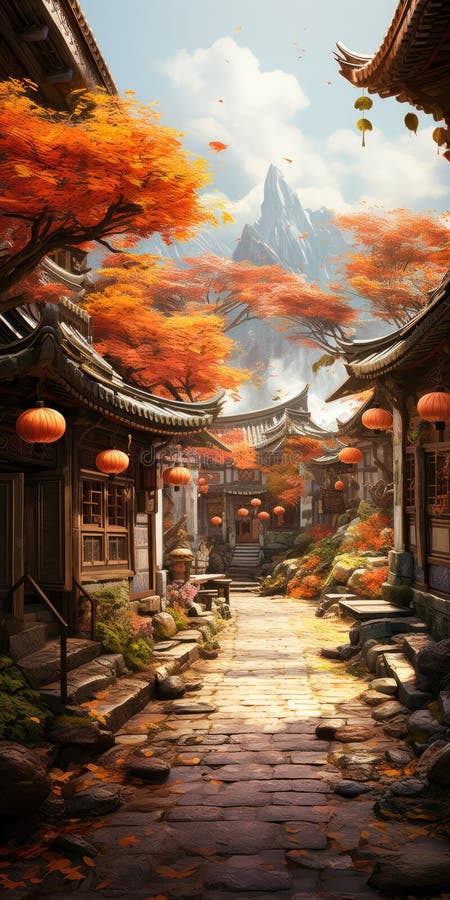
Wutun_Temple.
Frequently Asked Questions
-
What is Wutun Temple and why should I visit?
Wutun Temple, or 吾屯寺, is a stunning Tibetan Buddhist temple located in Qinghai Province, China. Renowned for its unique architecture and vibrant murals, it offers visitors a glimpse into the rich cultural and spiritual life of Tibetan Buddhism. The temple is also home to a lively monastic community, making it a perfect spot for those interested in spirituality and local traditions. -
How do I get to Wutun Temple?
To reach Wutun Temple, you can fly into Xining, the capital of Qinghai Province. From there, take a bus or hire a taxi for the approximately 60-kilometer (about 37 miles) journey to the temple. Public transportation is available, but a private vehicle may offer more comfort and flexibility, especially if you want to explore the surrounding areas. -
What are the opening hours and entrance fees?
Wutun Temple typically opens early in the morning around 8:00 AM and closes in the evening around 6:00 PM. Entrance fees are usually modest, around 30 RMB (approximately $5), but it’s best to check for any changes or special events that might affect access or pricing. -
What should I wear when visiting Wutun Temple?
Visitors to Wutun Temple are encouraged to dress modestly and respectfully. Comfortable clothes that cover your shoulders and knees are recommended, as is wearing shoes that are easy to remove, as you may need to take them off when entering certain areas of the temple. -
Are there any guided tours available at Wutun Temple?
Yes, guided tours are available and can enhance your experience by providing deeper insights into the temple’s history, architecture, and religious significance. Local guides often offer tours in multiple languages, including English. It’s advisable to book in advance, especially during peak tourist seasons. -
What should I know about photography at Wutun Temple?
Photography is generally permitted in Wutun Temple, but be respectful of the monks and worshippers. Avoid using flash and be mindful of asking permission before taking photos of individuals. Some areas may have restrictions, so look for signs or ask a guide if you’re unsure. -
Are there accommodations near Wutun Temple?
While there are limited accommodations directly next to Wutun Temple, you can find several guesthouses and hotels in nearby towns. Staying in Xining offers more options, from budget hostels to mid-range hotels, making it a suitable base for day trips to the temple. -
What is the best time to visit Wutun Temple?
The best time to visit Wutun Temple is during the spring (April to June) and autumn (September to October) months when the weather is mild and the tourist crowds are smaller. However, if you’re interested in experiencing local festivals or events, check the lunar calendar for specific celebrations that may enhance your visit.
Final Thoughts on Your Trip
As you prepare to wrap up your journey to Wutun Temple, take a moment to reflect on the rich tapestry of experiences you’ve woven during your visit. This sacred site, with its stunning architecture and serene surroundings, serves not just as a destination, but as a portal to a deeper understanding of Tibetan culture and spirituality. The vibrant colors of the murals, the melodic chants of the monks, and the peaceful ambiance create a unique atmosphere that invites introspection and connection.
Embrace the memories you’ve created here—whether it was the enlightening conversations you had with locals, the breathtaking views of the surrounding mountains, or the moments of quiet reflection that allowed you to soak in the spiritual essence of the temple. Each visit to Wutun Temple is a journey not just of miles, but of the heart and mind.
As you move forward, carry the spirit of Wutun Temple with you. Let its tranquility inspire you in your everyday life and remind you of the beauty found in moments of stillness and contemplation. Whether you’re planning your next adventure or returning home, may the lessons learned and the experiences cherished during your time here continue to illuminate your path. Safe travels, and may your wanderlust lead you to many more remarkable discoveries!